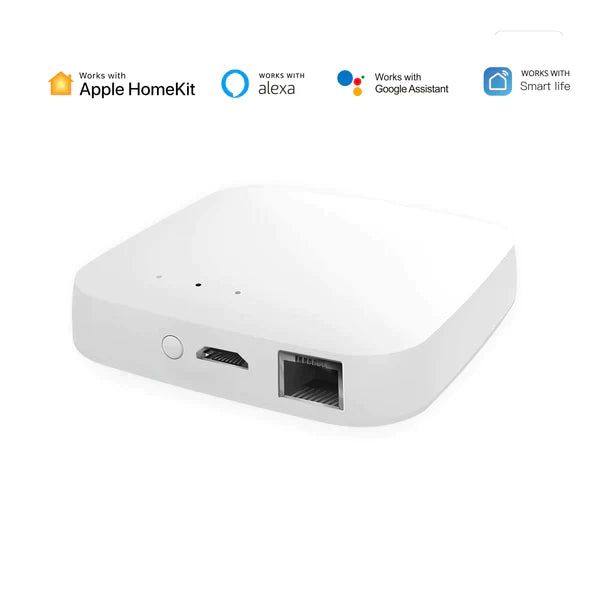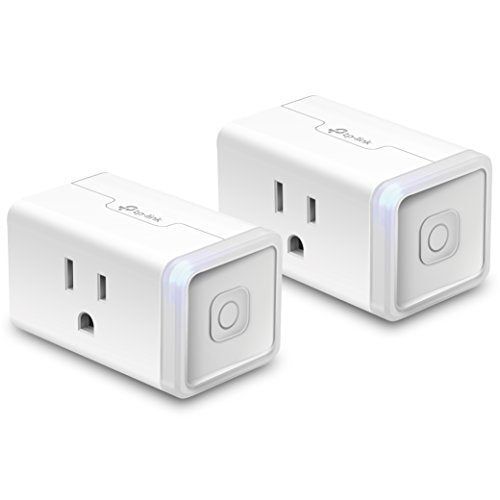What is a Zigbee Smart Home Hub?

Introduction
A zigbee smart home hub is a central device that controls and connects all the zigbee compatible devices in your smart home. Zigbee is a wireless protocol that allows smart home devices like lights, switches, sensors and more to communicate with the smart home hub and each other.
Zigbee smart home hub serves as the brain of your zigbee based smart home and offer benefits like:
Remote Access and Control
A zigbee smart home hub allows you to control all your connected zigbee devices from anywhere through an app on your smartphone or tablet. Whether you want to turn on the lights from your bed or turn off the thermostat when you leave for vacation, the zigbee smart home hub makes it possible.
Connecting More Devices
Zigbee protocol has a limitation that connected devices can’t communicate beyond a certain range from the coordinator (which is the zigbee smart home hub). Having the zigbee smart home hub centrally placed allows it to bridge connections between devices spread all over your home.
Automation and Schedules
A zigbee smart home hub allows creating interaction between different devices so that they can work automatically. You can set schedules to turn on lights at sunset or trigger the air purifier when the air quality sensor detects a certain level of particles.
Compatibility with Multiple Ecosystems
With a zigbee smart home hub, you are not locked into one smart home ecosystem. As long as the device has zigbee compatibility, light switches from Philips Hue, sensors from Aqara or door locks from Yale can work together through the zigbee smart home hub.
Also Read:
https://besraha-news.online/sony-a7-iv-2023-still-one-of-the-best/
Intelligent Analytics and Insights
The zigbee smart home hub collects data from all the connected zigbee devices and can provide actionable insights through customized dashboards and notifications. For instance, it can track energy consumption patterns and notify about unusual events.
Some of the top zigbee smart home hub options available in the market are:
Top Zigbee Smart Home Hubs
| Hub | Key Features |
| Philips Hue Hub | – Controls Philips Hue smart lights and accessories
– Supports up to 50 Philips Hue lights – Works with Alexa, Google Assistant, Apple HomeKit |
| Samsung SmartThings Hub | – Integrates with major smart home ecosystems
– Automates routines for lights, locks, sensors etc – Remote access and monitoring |
| Echo Plus (2nd Gen) with Hub built-in | – Built-in zigbee smart home hub
– Controls compatible lights, plugs, switches etc – Voice control through Alexa is possible |
| Wink Hub 2 | – Connects with a wide range of zigbee devices
– Integrates with Google Assistant, Alexa, IFTTT for automation |
| Aqara Hub M2 | – Specifically designed for Xiaomi/Aqara zigbee ecosystem
– Supports complex automation rules – Local storage for scenes and automation |
These zigbee smart home hub options cover a wide range of features, compatibility with brands, voice assistants and most importantly support the zigbee protocol to build your smart home on.
How Does a Zigbee Smart Home Hub Work?
Now that you know what a zigbee smart home hub is and the options available, let’s understand how it works:
- The zigbee smart home hub serves as a controller and bridge for all zigbee compatible devices in the home. It has a zigbee radio built-in to communicate using the zigbee protocol.
- The hub connects to your home router typically through WiFi (some models also offer Ethernet connectivity). This allows access from anywhere through your smart devices.
- The zigbee devices like lightbulbs, sensors, switches etc are paired with the zigbee smart home hub by placing them in discovery/pairing mode.
- Command inputs for the connected devices are then sent through the hub – whether manually through an app or integrating with Alexa/Google Assistant.
- The zigbee smart home hub facilitates communication between devices, automation rules, schedules. Data from sensors flows to the hub which can trigger actions for other devices.
- Most hubs don’t require a cloud connection for basic device communication but they utilize cloud servers for remote access outside the local network.
So in a nutshell, the zigbee smart home hub acts as the central point connecting and relaying signals to make devices work together intelligently.
Setting up a Zigbee Smart Home System
Once you select a zigbee smart home hub, how do you go about setting up a working zigbee based smart home system? Follow these key steps:
Step 1: Place Your Hub Strategically
The zigbee smart home hub should be placed centrally in your home. This allows it to reliably connect with devices spread across the home including the basement and attic.
Also ensure your hub connects to your home WiFi router or internet modem with good signal strength. Having wired ethernet connectivity instead of WiFi is even better.
Step 2: Connect Devices to the Hub
Go through the pairing/discovery mode for individual zigbee devices as per their manuals so that they can securely connect to the hub.
Each zigbee smart home hub has a maximum device limit it can support – connect the most critical devices first then expand to others.
Step 3: Arrange Devices Into Rooms/Groups
The hub software allows creating rooms, floors or custom groups so related devices show up together. For example, the front door lights, porch motion sensor and door lock can be in an entrance group.
This grouping reflects in the control apps and helps in building automation recipes between devices in a logical manner.
Step 4: Build Automations
One of the key advantages of a managed zigbee smart home hub is the ability to create interaction flows between devices.
Like turning on kitchen lighting when motion is detected or closing the shades when the patio gets too warm in summer afternoons.
Complex rules can be built once you define the triggers, conditions and actions clearly.
Step 5: Enable Voice Control
Major smart home hubs feature integration with Amazon Alexa, Google Assistant and Apple HomeKit. This allows using voice commands to control devices connected to the zigbee smart home hub.
You can simplify control by creating custom voice routines – for instance saying “Hey Google, movie time” can dim the lights, turn the TV on and adjust the thermostat.
By following these steps, you can have a zigbee based smart home completely customized to your needs while avoiding the pain of having too many disparate apps.
What Are the Limitations of a Zigbee Smart Home Hub?
While a zigbee smart home hub offers several benefits, some limitations to keep in mind before going all in:
- Single Point of Failure: If your zigbee hub crashes or is unavailable, there is no control over connected devices. Newer hubs offer external backups but have redundancies.
- Distance Restrictions: Zigbee devices have a range of about 100 meters line of sight from the coordinator. So device placement matters when linking everything to the hub.
- Interoperability: Although zigbee aims for a universal language between smart devices, some proprietary implementations still cause devices from different makers to not play well together.
- Limited Bandwidth: The zigbee protocol has very low bandwidth and cannot handle large data transfers. So bulky commands better route through WiFi/Ethernet links instead of congesting the zigbee mesh.
Despite these constraints, a zigbee smart home hub delivers on the promise of unifying the fragmented smart home industry – at least for zigbee compatible devices. And the interoperability is improving with wider adoption.
Carefully evaluating your home needs versus hub capabilities can lead to choosing the right product for your context. Weighing the limitations early on sets pragmatic expectations on what is possible.
Frequently Asked Questions
Here are some common queries around zigbee smart home hubs:
Does every zigbee device need the hub?
Yes, the zigbee smart home hub is necessary for using any zigbee compatible lights, sensors, switches, plugs or appliances in a managed, integrated manner. Zigbee devices can’t interoperate directly without the unifying hub.
Can I connect WiFi and zigbee devices to the same hub?
Some hubs support having both WiFi and zigbee radios built-in so can handle devices using those different wireless standards. Other units are mainly focused on building a robust zigbee mesh and need a separate router for WiFi-based devices.
How many devices can connect to a zigbee hub?
Each zigbee smart home hub specifies a maximum device limit – usually between 50 to 100. This limit is the number of direct zigbee links active at a time instead of total pairings stored. Complex topologies have a lower limit compared to simple lights or sensor grids.
Is a standalone hub better or Echo/Google speaker with hub built-in?
Standalone hubs are designed specifically for device management and allow interfacing with any voice assistant ecosystem. An Echo or Nest speaker with hub can provide seamless Alexa/Assistant integration but may lack deeper device support or automation rules.
Conclusion
In conclusion, bringing home the zigbee smart home hub lays the framework on which you can build an intelligent network of lights, appliances, security gears perfectly customized for your comfort and peace of mind. These hubs eliminate the complexity of having too many disjointed apps or protocols.
The current range of options from Samsung SmartThings to Amazon Echo Plus offer great integrations with third party products alongwith versatile automation flows between connected zigbee devices.
Figuring out current and future needs around remote access, voice control, scheduling, energy tracking etc guides picking the right zigbee smart home hub. Streamlined set up backed by responsive customer service ensures your smart home controller doesn’t remain a dumb investment.
With technologies like Apple HomeKit and Project Connected Home over IP standardizing configurations, the fragmentation problem is being actively solved. Soon zigbee smart home hubs will become universal translators automatically detecting and onboarding devices without needing much manual intervention.
The choice of your central zigbee platform sets the foundation for expanding capabilities over time. As IoT gadgets become mainstream, your zigbee smart home hub makes that scalable leap into the future truly possible while granting you command over your personal space today.







